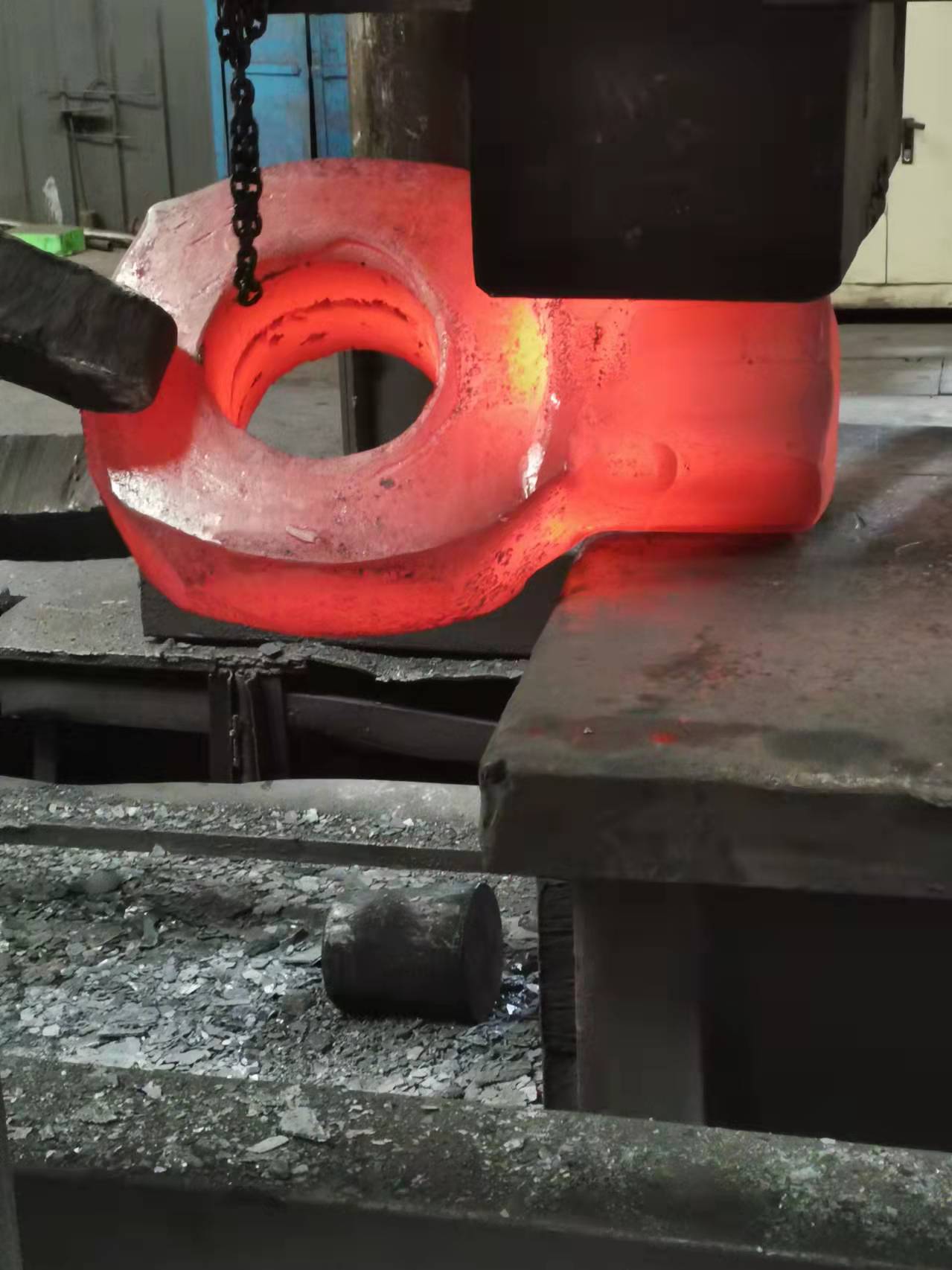Cracking cause analysis of 65Mn forgings
2022-11-18
65Mn forgings are one of the inseparable parts in our heavy industry. The reasons for cracking of 65Mn forgings during shearing were analyzed by means of macroscopic inspection, chemical composition analysis, metallographic analysis, SEM and EDS. The results show that the cracking of 65Mn forgings during the shearing process is mainly due to the high sulfur content in the steel and the formation of a large amount of sulfide. Due to the different plasticity coefficient from that of steel, cracks are formed during the shearing process.
The strength, hardness, elasticity and hardenability of 65Mn spring steel is higher than that of 65 steel, and it has the tendency of overheating sensitivity and tempering brittleness, water quenching has the tendency of forming cracks, the machinability of annealed state is reasonable, the cold deformation plasticity is low, and the weldability is poor. Widely used in moderate load plate spring, high wear resistance parts, such as grinding machine spindle, spring clamping head, precision machine tool screw, cutter, spiral roller bearing sleeve ring, railway rail, etc.
Two representative samples are selected from the forging products with problems. Cross section, longitudinal section metallographic sample, composition sample and Brinell hardness sample are taken, and ultrasonic cleaning is carried out on the shear surface. Cut off the same batch of square billet to prepare low and high power sample.
Magnifying glass was used to observe the macroscopic fracture, scanning electron microscope (SEM) was used for fracture observation and energy spectrum analysis, metallographic analysis was used for microscope, composition analysis was used for spectrometer, and Brinell hardness test was used for electronic Brinell hardness tester. The billet was etched with hot acid in 1∶1 hydrochloric acid solution.
The molten steel deoxidation, dephosphorization, desulfurization is poor, in the solidification process gathered in the center of the continuous casting billet, forming segregation, after rolling, segregation can not be completely eliminated, a large number of sulfide located in the center, in the shear process, with the metal plastic deformation, the gap between the sulfide and the matrix gradually expanded into a crack, the formation of shear plane layered cracks.
1, reduce the content of P and S in steel. LF furnace is used for deep desulfurization to reduce the formation of sulfide inclusions.
The strength, hardness, elasticity and hardenability of 65Mn spring steel is higher than that of 65 steel, and it has the tendency of overheating sensitivity and tempering brittleness, water quenching has the tendency of forming cracks, the machinability of annealed state is reasonable, the cold deformation plasticity is low, and the weldability is poor. Widely used in moderate load plate spring, high wear resistance parts, such as grinding machine spindle, spring clamping head, precision machine tool screw, cutter, spiral roller bearing sleeve ring, railway rail, etc.
Two representative samples are selected from the forging products with problems. Cross section, longitudinal section metallographic sample, composition sample and Brinell hardness sample are taken, and ultrasonic cleaning is carried out on the shear surface. Cut off the same batch of square billet to prepare low and high power sample.
Magnifying glass was used to observe the macroscopic fracture, scanning electron microscope (SEM) was used for fracture observation and energy spectrum analysis, metallographic analysis was used for microscope, composition analysis was used for spectrometer, and Brinell hardness test was used for electronic Brinell hardness tester. The billet was etched with hot acid in 1∶1 hydrochloric acid solution.
The molten steel deoxidation, dephosphorization, desulfurization is poor, in the solidification process gathered in the center of the continuous casting billet, forming segregation, after rolling, segregation can not be completely eliminated, a large number of sulfide located in the center, in the shear process, with the metal plastic deformation, the gap between the sulfide and the matrix gradually expanded into a crack, the formation of shear plane layered cracks.
1, reduce the content of P and S in steel. LF furnace is used for deep desulfurization to reduce the formation of sulfide inclusions.
2, reduce the oxygen content in steel. Appropriately increase the final content of C, control the temperature of the end point, control a certain amount of Al content, according to the Ca/Al ratio, appropriate Ca treatment in the refining process to ensure the soft argon blowing time after refining, so that the inclusion components float. Protect pouring and reduce secondary oxidation during continuous casting.
this is open die forging produced by tongxin preicision forging

X
We use cookies to offer you a better browsing experience, analyze site traffic and personalize content. By using this site, you agree to our use of cookies.
Privacy Policy



